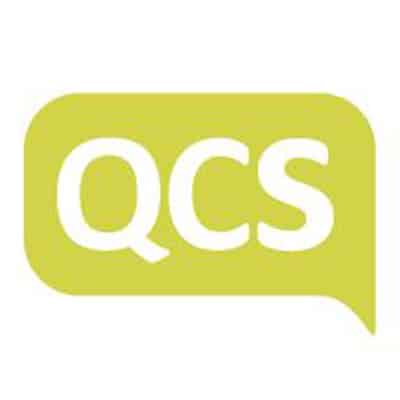Improving your quality rating from CQC is a real achievement for any registered manager. With the rollout of the new Single Assessment Framework and the focus on evidence, here are some pointers to help you get there.
Understand CQC Expectations and Processes
Take time to really understand CQC’s guidelines and criteria for assessment. This involves regularly reviewing changes to its frameworks and standards to ensure you can evidence compliance.
Regular Self-Audit and Assessment
Conduct regular audits and self-assessments against the quality statement. This means honestly evaluating your services, identifying strengths, and recognising areas that need improvement. Continuously learn and share when issues arise as a result of auditing.
Implement and Review Training
Have you completed a training needs analysis, and does this reflect the needs of your service user? Invest in training and career development for your team, always. Make sure you include training for specific roles and areas highlighted by CQC, such as the Oliver McGowan mandatory training in learning disability and autism. If training was flagged as ‘needs improvement’ by CQC, address it.
Promote a Culture of Open and Honest Communication
As a manager, you should create an environment where staff, users, family, friends and professionals feel comfortable. This means they should be able to raise concerns or suggest improvements. Make sure there is a clear process to answer and resolve any concerns or issues. Ask yourself: ‘Do we follow the duty of candour requirements?’
Focus on Person-Centred Care and Support
Care and support plans must be tailored to individual preferences and needs. Can you evidence service users’ involvement in design, planning, monitoring and decision-making about their care and support or that of a legal representative such as a power of attorney or solicitor? If not, do the plans follow the principles of the Mental Capacity Act and best interest process, are they regularly reviewed and amended?
Maintain Comprehensive Records
Recording and reporting are vital in evidencing service user involvement. Do you record information like consent before carrying out tasks? Are areas detailed in care and support plans covered in records, such as evidence of cleaning glasses, hearing aids, and good oral care? Keep detailed and accurate records of not just the care and support provided but evidence that is focused on the individual and clearly reflects the life they want to lead rather than just tasks completed.
Do your records show positive interactions, engagement in activities, and being encouraged to be a member of the local community? Comprehensive records must include health interactions like appointments, visitors, documenting assessments, interventions and outcomes to demonstrate high-quality care and support delivery. Records need to evidence holistic, all-round care and support that shows what someone’s day actually looks like.
Empower Service Users, Families, or Key People, Staff, Professionals
Do you provide information that is accessible and meets the communication needs of individuals? Are you compliant with the Accessible Information Standard, and what additional support do you offer to service users and their families to be involved in the running of the service?
Does this include feedback on quality, whether good or bad? Do you have links with advocates where needed, and are they encouraged to be part of care and support planning and decision-making processes?
Actively seek feedback from service users, families, key people, and staff through surveys, meetings, or suggestion boxes. Use this feedback constructively to make continuous improvements, and let people know what you have done in your ‘You Said, We Did’ notices and communications.
Health and Safety Measures
Plan, prioritise health and safety standards and checks within your setting. How do you manage accidents and incidents? Can you evidence review, peaks and troughs, and any learning? Include how you evidence infection control, risk assessments, carrying out regular maintenance, audits and service regimes to ensure a safe environment for staff, service users and visitors. Download the QCS free Good Governance Planner to help with this area of compliance.
Work Collaboratively
Collaborate with other healthcare providers, community organisations and stakeholders to improve the overall quality of care and support available to service users. Remember, under the new Single Assessment Framework, CQC will collect information from these to contribute to the assessment of the quality of your service.
Robust Governance and Leadership
You should have a clear and effective leadership and governance structure within the organisation that sets out your systems and processes. This involves effective management, clear policies and leadership that creates an open, honest, positive and supportive culture. Do people know who is who in your organisation? Are your leaders visible and accessible to your teams and service users?
Can you evidence making appropriate regulatory notifications where needed, taking action and learning as an organisation as a result of any shortfalls?
Prepare for Inspections
Prepare thoroughly for CQC inspections. Be organised, ensure all necessary documentation is readily available, and be transparent during the inspection process. Conduct mock inspections, review your audits and processes.
Be aware that you may be assessed by CQC without a site visit, so you also need to be prepared to share evidence with CQC electronically on an ongoing basis so they can review the quality of your service remotely.
Stay Informed and Engaged
Attend provider and manager forums and register for CQC newsletters to keep up to date with what is happening from the view of the regulator. Review CQC reports of your neighbouring services to see what CQC is focusing on and if you can identify improvements in your service as a result.
By reviewing these areas, registered managers, nominated individuals and providers can positively impact the quality of care and support provided, and evidence doing so, ultimately, improving your CQC rating and reflecting a commitment to excellent care for all service users.
Checklist: How to Improve Your CQC Rating
Understand CQC Expectations and Processes
- Thoroughly understand CQC’s guidelines and criteria for assessment.
- Regularly review changes to frameworks and standards for compliance.
Regular Self-Audit and Assessment
- Conduct regular audits and self-assessments against the regulator’s quality statements.
- Honestly evaluate services, identify strengths, and recognise areas needing improvement.
- Continuously learn and share when issues arise.
Implement and Review Training
- Complete a training needs analysis reflecting the needs of service users.
- Invest in training and career development for the team.
- Include role-specific and CQC-highlighted training.
Promote a Culture of Open and Honest Communication
- Create an environment where concerns or suggestions can be raised freely.
- Follow the Duty of Candour requirements.
Focus on Person-Centred Care and Support
- Ensure care and support plans are tailored to individual preferences and needs.
- Evidence service users’ involvement in design, planning, and decision-making about their care.
- Regularly review and adjust care plans.
Maintain Comprehensive Records
- Record information like consent before carrying out tasks.
- Ensure records cover areas detailed in care and support plans.
- Keep detailed and accurate records that focus on the individual’s life.
Empower Service Users, Families, Key People, Staff, Professionals
- Provide accessible information meeting communication needs.
- Be compliant with the accessible information standard.
- Actively seek feedback through surveys, meetings, or suggestion boxes.
Health and Safety Measures
- Plan and prioritise health and safety standards and checks.
- Evidence review, peaks, and troughs in accidents and incidents.
- Document infection control, risk assessments, and regular maintenance.
Work Collaboratively
- Collaborate with healthcare providers, community groups, and stakeholders.
- Engage in partnerships to improve the overall quality of care and support.
Governance and Leadership
- Have a clear and effective leadership and governance structure.
- Ensure leaders are visible and accessible to teams and service users.
Prepare for Inspections
- Prepare thoroughly for CQC inspections.
- Ensure all necessary documentation is readily available.
- Be transparent during the inspection process.
Stay Informed and Engaged
- Attend provider and manager forums.
- Register for CQC newsletters.
- Review CQC reports of neighbouring services.
By completing this checklist, registered managers, nominated individuals, and providers can positively impact the quality of care and support provided, improving the CQC rating and reflecting a commitment to excellent care for all service users.






